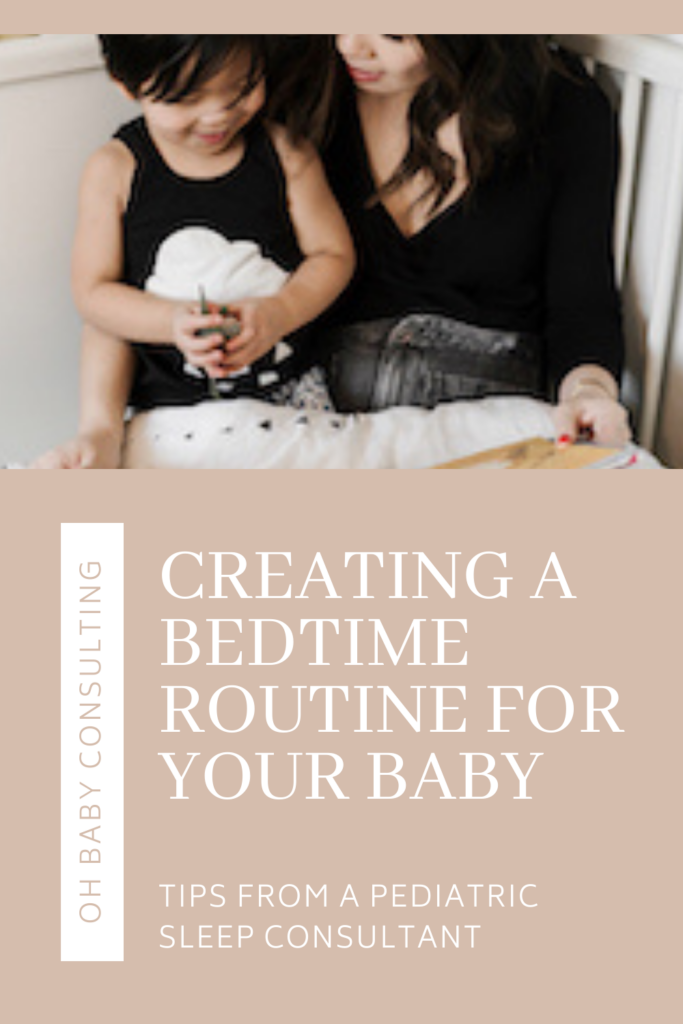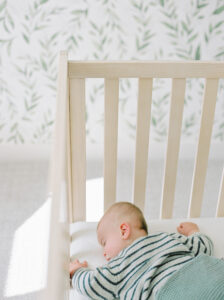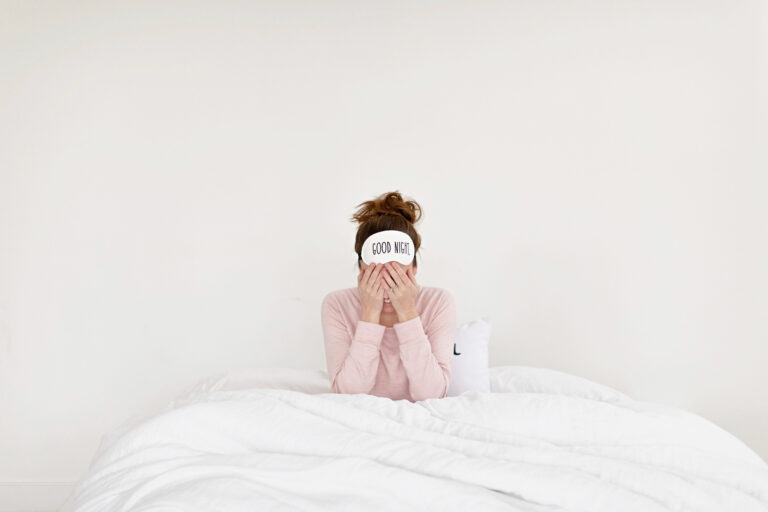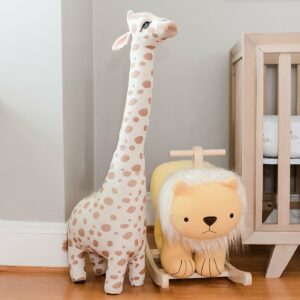One of the easiest ways to establish a healthy sleep foundation from Day 1 is to create and maintain a bedtime routine. Infants and young children thrive on routine; in fact, they are comforted by predictability. A young mind is exposed to so much new information every day that it’s reassuring for a child to know that they can depend on certain events to have a predictable structure.
Routines also cue your child’s brain and body that sleep time is coming. Your child will start to recognize the order of the routine and begin to anticipate what comes next. With enough repetition, this process happens automatically in a very Pavlovian way. A calm and successive routine will also make the onset of sleep come more easily. Can you imagine if you walked out of your workout and immediately someone told you to lay down and fall asleep? This would be nearly impossible, and the same is true for our little ones. By allowing them some time to unwind, you are making the falling asleep process that much easier.
If you’re totally lost on where to start or how to create an effective routine, don’t worry – I’ll break it all down for you.
How long should bedtime routines be?
Bedtime routines are generally between 20-30 minutes long, including a final feeding (for babies under 12 months) and usually involve 4-5 steps. But don’t set your stopwatch or stress too much about activities; this is just a loose frame of reference, so if you have fewer steps or it takes a little longer, that is just fine! However, keep in mind that the purpose of the bedtime routine is to allow your child some time to unwind and prepare their body for sleep but not to be too long that it seems to drag on and it becomes hard to recognize when the end of the routine is approaching.
What steps should my bedtime routine include?
If your baby is under 12 months old, your bedtime routine should include a full feeding. Where you place this in your routine is up to you, but I like to separate it from sleep just a bit to help eliminate the hard-to-break feed-to-sleep association.
I also love to include baths in the bedtime routine. If you’re not a bath-every-night type of family, I’d recommend substituting it with a washcloth-wipe-down to give your little one a similar sensory experience. Following a bath, the rest of the bedtime routine should take place in your baby’s sleep space.
After a fresh diaper, maybe some lotion, and a clean pair of PJs, I recommend reading a book or two. Reading during the bedtime routine is a wonderful time for bonding and connection amidst a busy day, plus the benefits of early literacy are endless (okay, is my child development nerdiness coming out enough!?) If your baby seems disinterested or extra fussy, this is a step that you can skip or cut short. Following a book or two, you might sing a few songs or say a prayer before laying your child in their crib, giving them a kiss, and saying goodnight.
Simple but effective!
Okay, now what?
Now your child falls asleep peacefully in 5-10 minutes. Dreamy, right?
Your bedtime routine is the foundation for how the rest of the night will go. If your bedtime routine also includes helping your baby to sleep, more than likely they will be up several more times during the night demanding that you help them again. The bedtime routine is that powerful!
If you’re asking yourself, “Okay, but HOW do I just lay my baby down awake at the end of the bedtime routine and expect them to fall asleep?” then it’s time to work together so I can show you the complete step-by-step process for teaching your baby the lifelong skill of sleep.














